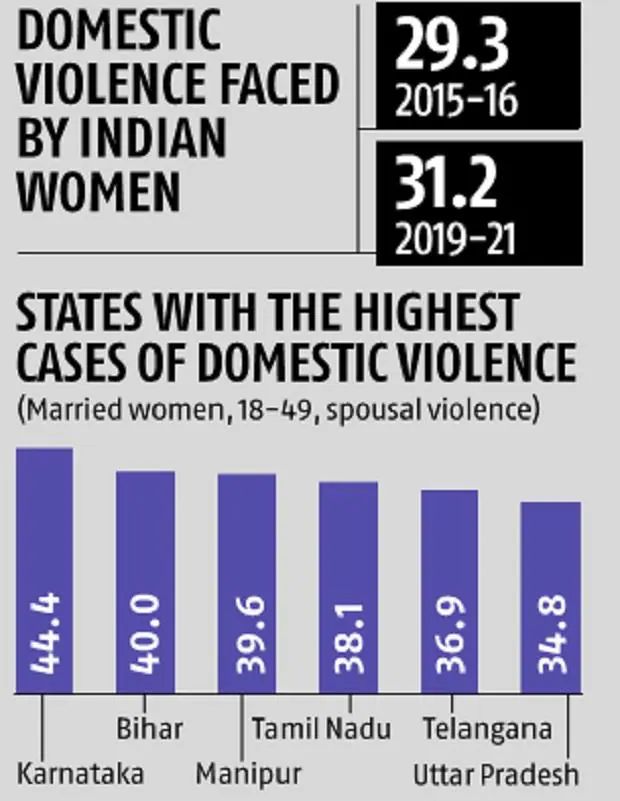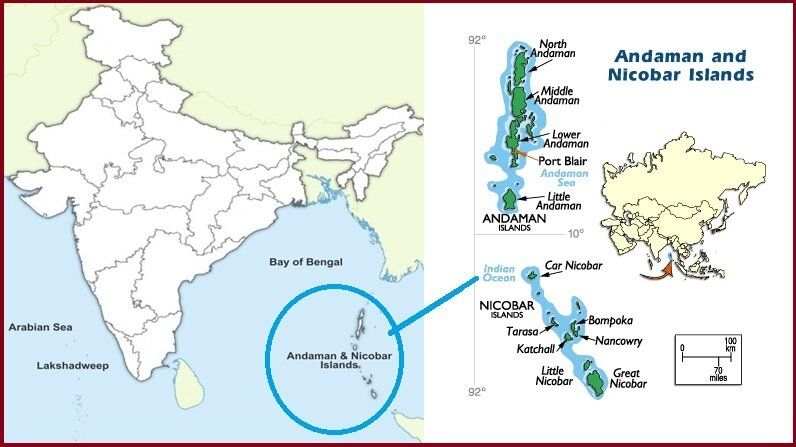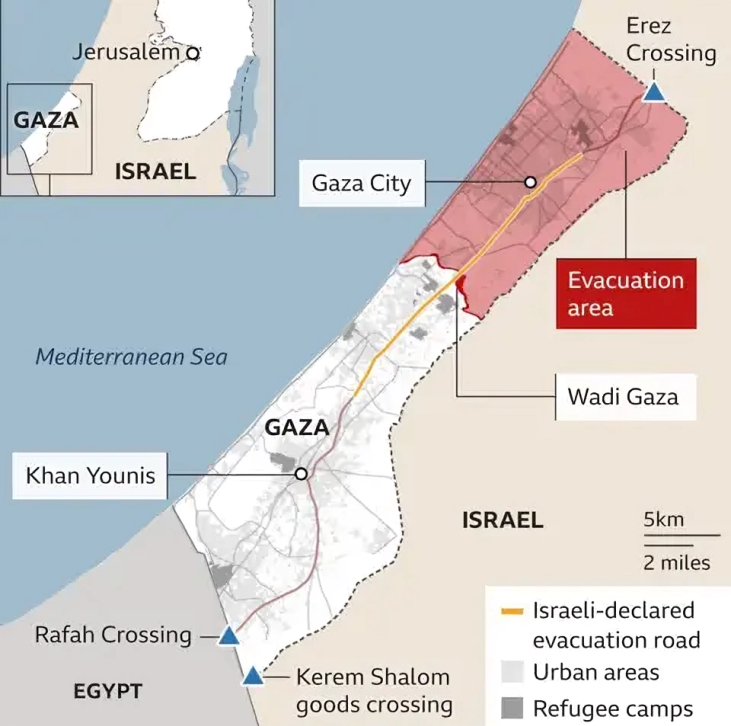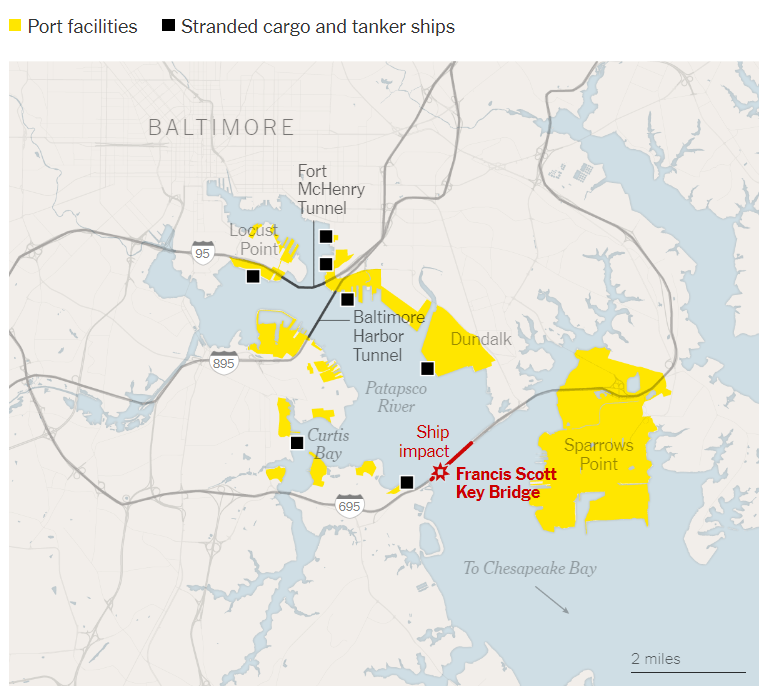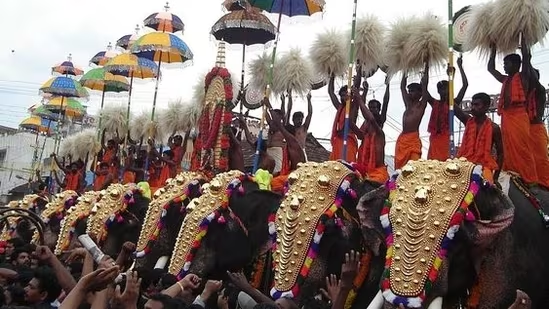Social Justice
Protection of Women from Domestic Violence
For Prelims: Protection of Women from Domestic Violence Act, 2005, National Family Health Survey, Dowry Prohibition Act 1961
For Mains: Legal frameworks addressing domestic violence in India, the Role of societal norms.
Why in News?
The Delhi High Court recently emphasised the universality of the Protection of Women from Domestic Violence Act of 2005, stating that it applies to all women regardless of their religious or social background.
- The High Court made these observations while dismissing a plea filed by a husband and his relatives.
- The plea challenged an appellate court order that reinstated a domestic violence complaint filed by the wife.
How Widespread is Domestic Violence in India?
- In India, 32% of ever-married women reported having experienced physical, sexual, or emotional violence by their husbands in their lifetime.
- According to the National Family Health Survey-5 (NFHS-5), 2019-2021, “29.3% of married Indian women between the ages of 18 and 49 have experienced domestic/sexual violence; 3.1% of pregnant women aged 18 to 49 have suffered physical violence during their pregnancy.”
- That is only the number of cases reported by women. There are frequently many more that never make it to the police.
- According to NFHS data, 87% of married women who are victims of marital violence do not seek help.
What are the Factors Contributing to Domestic Violence?
- Gender Disparities:
- India's wide gender gap, as reflected in global indices, contributes to a sense of male superiority and entitlement.
- Men may use violence to assert dominance and reinforce their perceived superiority.
- Substance Abuse:
- Alcohol or drug misuse that impairs judgement and exacerbates violent tendencies. Intoxication leads to loss of inhibitions and escalation of conflicts into physical or verbal abuse.
- Dowry Culture:
- There is a strong correlation between domestic violence and the dowry system, with instances of violence increasing when dowry expectations are not met.
- Despite legislation prohibiting dowry, such as the Dowry Prohibition Act 1961, cases of bride burning and violence related to dowry persist.
- Financial stressors and dependency dynamics that exacerbate tensions within relationships.
- There is a strong correlation between domestic violence and the dowry system, with instances of violence increasing when dowry expectations are not met.
- Sociocultural Norms:
- Traditional beliefs and practices perpetuate gender roles and household power imbalances.
- Patriarchal systems that prioritise male authority and control over women. Violence often stems from notions of ownership over women's bodies, labour, and reproductive rights, reinforcing a sense of dominance.
- Desire for dominance and exertion of control over a partner, stemming from insecurity or entitlement.
- Social conditioning often portrays marriage as the ultimate goal for women, reinforcing traditional gender roles.
- Indian culture often glorifies women who exhibit tolerance and submission, discouraging them from leaving abusive relationships.
- Socioeconomic Stressors:
- Poverty, and unemployment, create additional stresses within households, increasing the likelihood of violent behaviour.
- Mental Health Issues:
- Untreated mental health conditions such as depression, anxiety, or personality disorders that contribute to volatile behaviour.
- Lack of Education and Awareness:
- Limited understanding of healthy relationship dynamics and rights, leading to acceptance or normalisation of abusive behaviour.
- Ignorance about legal protections against domestic violence or available support services.
- Many women lack awareness of their rights and accept their subordinate status, perpetuating a cycle of low self-esteem and subjugation.
- Limited understanding of healthy relationship dynamics and rights, leading to acceptance or normalisation of abusive behaviour.
What Legal Frameworks Address Domestic Violence in India?
| Legal Framework | Description |
| Protection of Women from Domestic Violence Act, 2005 (PWDVA) |
|
| Indian Penal Code, 1860 (Section 498A) |
|
| Indian Evidence Act, 1872 |
|
| Dowry Prohibition Act, 1961 |
|
| Criminal Law (Amendment) Act, 2013 (Section 354A) |
|
| Juvenile Justice (Care and Protection of Children) Act, 2015 |
|
| National Commission for Women Act, 1990 |
|
| The Prohibition of Child Marriage Act, 2006 |
|
| Domestic abuse in the context of same-sex relationships |
|
Global Initiatives:
- Convention on the Elimination of All Forms of Discrimination against Women (CEDAW):
- Adopted in 1979 by the UN General Assembly, CEDAW works towards eliminating discrimination against women in all areas of life.
- UN Declaration on the Elimination of Violence against Women (DEVAW):
- The 1993 DEVAW was the first international instrument explicitly addressing violence against women, providing a framework for national and international action.
- Safe Cities and Safe Public Spaces:
- This initiative is a flagship program by UN Women aimed at preventing and responding to sexual harassment and other forms of violence against women and girls (W&G) in public spaces.
- It works collaboratively with city governments, local communities, and civil society organisations.
- Beijing Platform for Action:
- The 1995 Beijing Platform for Action identifies specific actions for governments to take to prevent and respond to violence against women and girls.
Why is Enforcement of Laws Against Domestic Violence Challenging?
- Social:
- Victims often hesitate to report domestic violence due to societal stigma, fear of retaliation, or concerns about family reputation. This silence makes it challenging for authorities to take action.
- Domestic violence incidents are often underreported. Victims may not recognise certain behaviours as abuse or may normalise them.
- Lack of Awareness:
- Many people, including victims, are unaware of their legal rights and available resources. Without awareness, reporting and seeking legal help become difficult.
- Dependency and Economic Factors:
- Victims may be financially dependent on their abusers. Fear of economic repercussions can prevent them from seeking legal assistance.
- Inadequate Implementation and Training:
- Law enforcement agencies and judicial bodies may lack proper training on handling domestic violence cases. Inconsistent implementation of laws hinders effective enforcement.
- Legal Hurdle:
- Proving domestic violence in court requires substantial evidence. Lack of witnesses or physical evidence can weaken cases.
- Complex Family Dynamics:
- Domestic violence often occurs within family units. Legal actions can disrupt family relationships, making victims hesitant to pursue legal remedies.
- Cultural and Regional Variations:
- Different cultural norms and practices affect how domestic violence is perceived and addressed.
- Enforcement strategies must consider these variations.
Way Forward
- A fundamental prerequisite is a transformative change in attitudes towards gender roles and power dynamics. Initiatives targeting both men and women are crucial for fostering mutual respect and dismantling the patriarchal mindset deeply ingrained in society.
- Mandate gender perspective training for stakeholders like law enforcement, service providers, and magistrates to foster empathy and victim-centred approaches.
- Ensure victims have access to free or low-cost legal representation throughout the court process.
- Implement programs that equip survivors with job training and financial literacy skills, fostering economic empowerment.
|
Drishti Mains Question: Q. Discuss the socio-cultural, economic, and legal challenges hindering the effective enforcement of laws against domestic violence in India. |
UPSC Civil Services Exam Previous Year Questions (PYQ)
Prelims:
Q. ‘Beijing Declaration and Platform for Action’, often seen in the news, is (2015)
(a) a strategy to tackle the regional terrorism, an outcome of a meeting of the Shanghai Cooperation Organization
(b) a plan of action for sustainable economic growth in the Asia-Pacific Region, an outcome of the deliberations of the Asia-Pacific Economic Forum
(c) an agenda for women’s empowerment, an outcome of a World Conference convened by the United Nations
(d) a strategy to combat wildlife trafficking, a declaration of the East Asia Summit
Ans: (c)
Mains:
Q. We are witnessing increasing instances of sexual violence against women in the country. Despite existing legal provisions against it, the number of such incidences is on the rise. Suggest some innovative measures to tackle this menace. (2014)
Q. How does patriarchy impact the position of middle-class working women in India? (2014)


Internal Security
Strategic Importance of A&N Islands
For Prelims: Andaman and Nicobar Islands, Indo-Pacific region, Malacca Strait, UNCLOS, India's Act East Policy
For Mains: Strategic Significance and challenges associated with Andaman and Nicobar Island, Geopolitical Implications on India
Why in News?
The Indian government's renewed focus on developing the Andaman and Nicobar Islands(ANI) underscores their strategic significance in the Indo-Pacific region, prompting efforts to enhance infrastructure and security.
- The recent focus on building strategic infrastructure on the islands, both civilian and military, is long overdue and reflects a lack of strategic maritime vision since Independence.
What is the Strategic Importance of the Andaman and Nicobar Islands?
- Located 700 nautical miles southeast of the Indian mainland, the Andaman and Nicobar Islands add 300,000 sq km to India's exclusive economic zone, with the potential for undersea hydrocarbon and mineral deposits.
- The islands' strategic location astride the Malacca Strait, makes them a crucial asset for India's ability to monitor and project power in the Indo-Pacific region.
- The Malacca Strait is a critical maritime choke point, with more than 90,000 merchant ships carrying about 30% of the world's traded goods passing through it annually.
- The islands share maritime boundaries with Myanmar, Thailand, Indonesia, and Bangladesh, giving India substantial ocean space under the United Nations Convention on the Law of the Sea (UNCLOS) in terms of exclusive economic zone and continental shelf.
- The islands can serve as the first line of defence against any attempt from the East to undermine India's maritime security, especially in the face of China's growing influence in the Indo-Pacific region.
- Port Blair can become a regional hub for navies to collaborate on disaster relief, medical aid, counter-piracy, search and rescue, and other maritime security initiatives.
What are the Challenges to the Development of the ANI?
- The shift from India's Look East policy to a stronger Act East policy, along with the growing recognition of the significance of maritime power and the increasing capabilities of the Chinese PLA Navy, has underscored the need to develop Indian island territories, especially the Andaman and Nicobar group.
- Lack of political prioritisation until recently, with the realisation of the islands' strategic importance only now.
- Challenges of distance from the mainland and difficulties in developing infrastructure.
- Complex environmental clearance procedures and regulations on forest and tribal conservation.
- Coordination challenges due to the involvement of multiple ministries and agencies. The conflict between long-term strategic vision and immediate political gains.
What Strategic Infrastructure Development is Needed in A&N Islands?
- Enhancing Maritime Domain Awareness:
- Ensuring comprehensive maritime domain awareness and surveillance over the islands.
- Bolstering deterrence capabilities against any naval misadventures from the East.
- Bolstering Infrastructure:
- Developing infrastructure to support India's maritime economy, especially in the southern group of islands.
- Improving transportation and connectivity to facilitate development and tourism. Developing Galathea Bay transhipment port on Great Nicobar Island.
- The plan to connect the A&N Islands to the mainland through Submarine Optical Fibre Cable (OFC) needs revitalisation. This will provide cheaper and better connectivity and access to Digital India's benefits.
- Reducing the islands' dependence on mainland support for essential supplies and services.
- Enhancing transportation and connectivity for development and tourism.
- Establishing high-speed inter-island ferry services and a seaplane terminal.
- Developing infrastructure to support India's maritime economy, especially in the southern group of islands.
- Enhancing Military Presence:
- The military must increase forces and deploy the appropriate assets at the Andaman Nicobar Command (ANC) to maintain island security. This includes basing surveillance and fighter aircraft there, as well as conducting frequent detachments.
- International Collaborations:
- Exploring partnerships with the Quad and Indo-Pacific Oceans Initiative (IPOI) for development initiatives.
- Seeking infrastructure development concessions akin to those on India's northern borders.
Andaman and Nicobar Islands
- History:
- India's association with Andaman and Nicobar Island dates back to the aftermath of the 1857 War of Independence when the British established a penal colony for Indian revolutionaries.
- The islands were occupied by the Japanese in 1942 and later became the first part of India to be liberated from British rule in 1943 when Netaji Subhas Chandra Bose visited Port Blair.
- After the Japanese surrender in 1945, the British reoccupied the islands. On the eve of Independence islands were given to India.
- The period from Independence until 1962 saw neglect of the islands due to their remote location and dark symbolism.
- In 1962, a naval garrison was established due to concerns about a Chinese submarine. In 2001, the Andaman Nicobar Command (ANC) was established in Port Blair after the post-Kargil War security review, marking India's first joint and Unified operational command.
- The ANC, established in 2001, is India's first joint/unified operational command, placing forces from all three services and the Coast Guard under a single commander-in-chief.
- The ANC is responsible for maintaining comprehensive maritime domain awareness and deterrence capabilities in the strategic Andaman and Nicobar archipelago.
- Key Facts:
- The Ten Degree Channel is a narrow strait that separates the Andaman Islands from the Nicobar Islands. It is located approximately at the 10-degree latitude mark.
- Indira Point is the southernmost tip of the Nicobar Islands. It is situated on Great Nicobar Island and marks the southernmost point of India.
- The ANI is home to 5 Particularly Vulnerable Tribal Groups: Great Andamanese, Jarwas, Onges, Shompens and North Sentinelese.
- Recent Development:
- NITI Aayog is undertaking a project for Great Nicobar which will include an international container transhipment terminal, an airport, a power plant, and a township.
- Additionally, a proposal for Little Andaman calls for the development of a new greenfield coastal city to compete with Singapore and Hong Kong.
- The Kra Canal is a proposed canal in Thailand that would connect the Gulf of Thailand with the Andaman Sea. It aims to create a shortcut for shipping between the Indian Ocean and the South China Sea.
|
Drishti Mains Question: Q. How should India prioritise development and security in the Andaman and Nicobar Islands, considering their historical importance, and geopolitical relevance particularly concerning China's maritime ambitions in the Indo-Pacific region? |
UPSC Civil Services Examination, Previous Year Questions (PYQs)
Prelims
Q1. Which one of the following pairs of islands is separated from each other by the ‘Ten Degree Channel’? (2014)
(a) Andaman and Nicobar
(b) Nicobar and Sumatra
(c) Maldives and Lakshadweep
(d) Sumatra and Java
Ans: (a)
Q2. Which of the following have coral reefs? (2014)
- Andaman and Nicobar Islands
- Gulf of Kachchh
- Gulf of Mannar
- Sunderbans
Select the correct answer using the code given below:
(a) 1, 2 and 3 only
(b) 2 and 4 only
(c) 1 and 3 only
(d) 1, 2, 3 and 4
Ans: (a)
Q3. In which one of the following places is the Shompen tribe found? (2009)
(a) Nilgiri Hills
(b) Nicobar Islands
(c) Spiti Valley
(d) Lakshadweep Islands
Ans: (b)


Governance
State of Medical Education in India
For Prelims: National Medical Commission, National Health Policy, Paramedics, Russia conflict with Ukraine.
For Mains: Challenges for Medical Education in India, Reforms for Medical Education in India.
Why in News?
The Ukraine-Russia war apart from other difficulties and hardships has led to tough times for Indian medical students in Ukraine. In February 2022, about 18000 Indian medical students studying in Ukraine were forced to return home after the country’s conflict with Russia escalated into a war.
- As a one-time exception, the National Medical Commission allowed 4,000 of these students, who were in their final semesters, to complete their internship at home.
- According to a report, around 70% of these repatriated MBBS students are now pursuing their courses from colleges in Serbia, Kyrgyzstan, Uzbekistan and Georgia.
- These colleges are also attracting students’ new batches of students from India to pursue medical education.
What are the Challenges Related to Medical Education in India?
- Limited Number of Seats: Medical college seats are still far less than the number of aspirants. The ratio of medical college seats to aspirants is about 20:1.
- Increase in Number of Aspirants: As per the study conducted by the National Institute of Educational Planning, the number of students taking the test has increased by almost 3 times in the past 10 years and only 0.25% make it to the top colleges.
- Uneven Distribution of Medical Colleges: Medical colleges in India are concentrated in urban areas which creates a vacuum in the rural areas.
- High Fees of Private Medical Colleges: Government institutions are more affordable in terms of fees and education quality.
- Outdated Curriculum: The curriculum of many medical colleges in India is outdated and not aligned with current medical practices. This leads to a gap between what students learn in medical school and the skills required in clinical practice.
- Lack of Infrastructure: Many medical colleges in India lack the necessary infrastructure to provide high-quality medical education. This includes modern laboratories, advanced medical equipment, and access to technology.
- Insufficient Emphasis on Practical Training: Medical education in India is often theory-based, with insufficient emphasis on practical training. This can result in doctors graduating without sufficient practical experience.
- Poor Medical Research: There is less emphasis on medical research in India as compared to other developed nations. Mostly, doctors in India prefer to take jobs after completion of their education, thus research is neglected.
National Medical Commission (NMC):
- The NMC has been constituted by an act of Parliament known as the National Medical Commission Act, 2019.
- The NMC acts as India's top regulator of medical education and practice.
- Committed to upholding the highest standards in healthcare education, NMC ensures the delivery of quality medical education and training across the nation.
What Initiatives have been Taken to Reform Medical Education?
- National Medical Commission: The inefficient and opaque Medical Council of India (MCI) has been completely overhauled, establishing the National Medical Commission (NMC) of the highest standards in professional integrity, experience, stature, and excellence.
- Competent individuals have been carefully selected and placed at the helm to further steer these reforms.
- Raising the Number of Seats: The Government is scaling up the number of seats by converting district hospitals into medical colleges using a private-public partnership model.
- Regulation of Fees: The National Medical Commission (NMC) Act has the provision to regulate fees and all other charges in 50% of the seats in private medical colleges and deemed universities. NMC is framing guidelines in this regard.
- One Country One Exam: For MBBS admissions, the National Eligibility cum Entrance Test (NEET) was introduced in 2016, which ensured 'one country, one examination, one merit' system and a common counselling system.
- Minimum Standard Requirement: It pertains to streamlining the entire regulations on Minimum Standards Requirement (MSR) for the establishment of medical colleges.
- Regular Quality Assessments: Quality assessments of medical colleges should be regularly conducted, and reports should be available in the public domain. The NMC is conducting a common exit exam for all medical undergraduates as a quality control measure.
What are Recommendations for Improving the Quality of Medical Education in India?
- NITI Ayog proposed to link private colleges to district hospitals to serve the underserved areas of the country.
- Enhancing the skills of Paramedics and nurses will help to cater to non-specialist demands of the medical sector and could tackle the problem of shortage of doctors.
- Public investment for starting medical colleges can be encouraged along with encouraging the private sector to set up medical colleges, with appropriate incentives.
- Optimal use of existing infrastructure to expand medical education facilities.
- Adopting a comprehensive India-specific approach for the creation of seats for specialists.
- To prevent the presence of 'ghost faculty' (teachers who exist only on paper but are paid a salary) in medical colleges, streamlining the recruitment process is imperative.
- Regular performance evaluations of colleges to identify and address concerns promptly.
|
Drishti Mains Question: Q. What are the challenges related to Medical Education in India and how has it been impacted by the recent Russia-Ukraine crisis? |
UPSC Civil Services Examination, Previous Year Questions (PYQs)
Prelims:
Q. Which of the following provisions of the Constitution does India have a bearing on Education? (2012)
- Directive Principles of State Policy
- Rural and Urban Local Bodies
- Fifth Schedule
- Sixth Schedule
- Seventh Schedule
Select the correct answer using the codes given below:
(a) 1 and 2 only
(b) 3, 4 and 5 only
(c) 1, 2 and 5 only
(d) 1, 2, 3, 4 and 5
Ans- (d)
Indian Economy
India’s Goods Exports Touches New Height
For Prelims: Status of India’s Exports, Trends in Exports
For Mains: India's Export Outlook, challenges and Way forward
Why in News?
India's merchandise exports reached a peak of USD 41.68 billion in March 2024 compared to the FY 2022-23.
What does the Current Export Data Reveal?
- About:
- India’s goods exports reached USD 41.68 billion in March 2024 compared to the FY 2022-23, despite a 0.67% decline from last year’s tally,
- Imports, on the other hand, dropped by 6% to USD 57.3 billion during the same period.
- The goods trade deficit contracted to USD 15.6 billion, the lowest in 11 months.
- Key Factors:
- Gold Imports Decline: Gold imports fell sharply by 53.6% in March to USD 1.53 billion.
- Non-Oil, Non-Gold Imports: The drop in non-petroleum, non-gold imports contributed to the overall decline.
- Silver Imports Surge: Interestingly, silver imports jumped to USD 816.6 million.
- Impact on Full-Year Figures (2023-24):
- While goods exports averaged USD 35.4 billion in the first ten months, the last two months’ spike lifted the full-year export figure to USD 437.1 billion.
- This performance is 3.1% below the record USD 451.1 billion achieved in the previous year.
- FY 2023-24 Projections:
- Despite persistent global challenges like the Ukraine war, and the West Asian crisis, overall exports are estimated to surpass last year’s record.
- India’s overall exports (merchandise + services) are estimated to reach USD 776.68 billion.
- This represents a positive growth of 0.04% over the previous fiscal year (FY 2022-23).
- Despite global challenges, this figure slightly edges out the USD 776.40 billion recorded in FY 2022-23.
- Despite persistent global challenges like the Ukraine war, and the West Asian crisis, overall exports are estimated to surpass last year’s record.
- Merchandise Export Drivers: Key contributors to merchandise export growth include:
- Electronic Goods: Exports increased by 23.64% to USD 29.12 billion.
- Drugs & Pharmaceuticals: Exports rose by 9.67% to USD 27.85 billion.
- Engineering Goods: Exports grew by 2.13% to USD 109.32 billion.
- Agricultural Commodities Show Positive Growth:
- Exports of agricultural commodities, such as tobacco, fruits, vegetables, meat, dairy products, spices, and oil seeds, exhibited positive growth in FY 2023-24.
- Trade Deficit Improvement:
- The overall trade deficit is estimated to significantly improve by 35.77% to USD 78.12 billion in FY 2023-24.
- Merchandise trade deficit improved by 9.33% to USD 240.17 billion compared to FY 2022-23.
- Current Account Balance Outlook:
- The easing of the goods trade deficit in March is expected to augur well for the current account balance in the final quarter of FY 2023-24.
What Should be the Strategy to Further Enhance India’s Exports?
- Cost Optimisation:
- Land, Power, and Capital Costs: The government must urgently address cost-related challenges associated with land acquisition, power tariffs, and capital availability.
- Scale and Efficiency: Encouraging economies of scale can significantly reduce cost disabilities for businesses.
- Enhancing Competitiveness:
- Infrastructure and Logistics: Improving transportation networks, ports, and warehousing facilities will enhance supply chain efficiency.
- Labour Flexibility: Streamlining labour laws and ensuring flexibility can make Indian companies more competitive.
- MSME Support: Strengthening Micro, Small, and Medium Enterprises (MSMEs) will contribute to overall competitiveness.
- Market Access via Trade Treaties:
- India should actively negotiate and sign trade agreements with key trading partners to facilitate market access for its exports.
- Bilateral and multilateral treaties can open up new avenues for Indian products globally.
- Technology and Quality Focus:
- Investing in research and development (R&D) and adopting advanced technologies will enhance product quality.
- Quality certifications and adherence to international standards are crucial for gaining consumer trust.
- Promoting Brand India:
- The government and industry bodies should collaboratively promote “Brand India” on the global stage.
- Highlighting India’s rich cultural heritage, skilled workforce, and innovative capabilities will attract international buyers.
- China Plus One Strategy:
- Encouraging multinational companies to diversify their manufacturing base away from China is essential.
- India can position itself as an attractive alternative for investment and production.
- By implementing these strategies, India can not only sustain its export growth but also surpass previous records, contributing to economic prosperity and global trade dynamics
|
Drishti Mains Question: Q. Discuss the potential and challenges of enhancing India's export competitiveness in the global market. Highlight key sectors with high export potential and strategies to leverage them for sustainable economic growth. |
UPSC Civil Services Examination, Previous Year Question (PYQ)
Prelims:
Q. The SEZ Act, 2005 which came into effect in February 2006 has certain objectives. In this context, consider the following: (2010)
- Development of infrastructure facilities.
- Promotion of investment from foreign sources.
- Promotion of exports of services only.
Which of the above are the objectives of this Act?
(a) 1 and 2 only
(b) 3 only
(c) 2 and 3 only
(d) 1, 2 and 3
Ans: (a)
Q. Consider the following statements: (2021)
The effect of devaluation of a currency is that it necessarily
- improves the competitiveness of the domestic exports in the foreign markets
- increases the foreign value of domestic currency
- improves the trade balance
Which of the above statements is/are correct?
(a) 1 only
(b) 1 and 2
(c) 3 only
(d) 2 and 3
Ans: (a)
Mains:
Q. How would the recent phenomena of protectionism and currency manipulations in world trade affect macroeconomic stability of India? (2018)

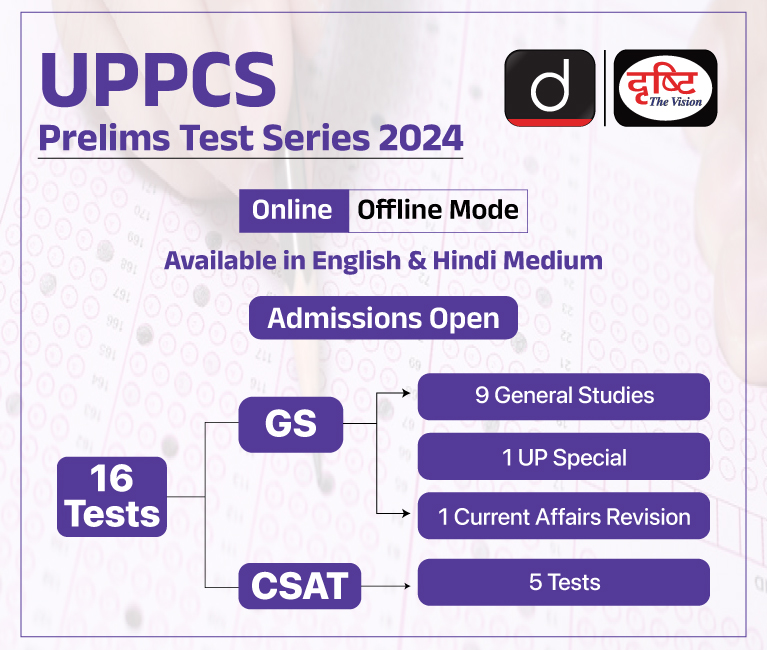
Governance
Impact of the Forest Rights Act on Land Conflicts
For Prelims: Forest Rights Act, 2006
For Mains: Issues of Tribal, Issues in the implementation of FRA,2006, Land Conflict in India
Why in News?
Recently, Land Conflict Watch, a data research agency, tracking land-related conflicts in India, has noted a significant correlation between land conflicts and the enforcement of the Forest Rights Act (FRA).
What Does the Analysis Reveal About Land Conflict?
- Land-related Conflicts in Constituencies of the Forest Rights Act (FRA):
- Out of the 781 conflicts documented in the Land Conflict Watch (LCW) database, a subset of 264 conflicts has been closely linked to parliamentary constituencies where the Forest Rights Act (FRA) is an important issue.
- These constituencies are commonly referred to as ‘FRA constituencies’ based on the People’s Forest report (by Centre for Science and Environment).
- 117 conflicts directly impact forest-dwelling communities, covering about 2.1 lakh hectares of land and affecting 6.1 lakh people.
- Reasons for the Conflicts:
- Conservation and Forestry Projects: Approximately 44% of the conflicts in these constituencies arise due to conservation and forestry projects, including activities like plantations.
- Non-Implementation and Violation of FRA: Approximately 88.1% of conflicts stem from the non-implementation or violation of crucial provisions within the Forest Rights Act (FRA). These provisions include:
- Prohibition on Evictions: Communities residing in forests are evicted before their rights claims are vested.
- Non Adhering to Prior Consent Requirement: Often diversion of forest land for other purposes without the prior consent of Gram Sabha.
- Lack of Legal Protection over Land Rights: Many forest-dwelling communities lack adequate legal safeguards for their land rights.
- Forest Administration and Protected Areas Management: The Forest Department emerges as the primary adversarial party in conflicts that jeopardise the forest land rights of local communities.
- Most Affected States:
- Maharashtra, Odisha, and Madhya Pradesh have the highest number of core FRA constituencies.
- The states with the most forest rights issues in critical FRA constituencies are Odisha, Chhattisgarh, and the union territory of Jammu and Kashmir.
- Out of the 781 ongoing conflicts documented in the Land Conflict Watch (LCW) database, 187 cases have emerged from 69 reserved parliamentary constituencies.
- Scheduled Tribes (STs): 110 conflicts occur in constituencies reserved for STs.
- Scheduled Castes (SCs): 77 cases are from constituencies reserved for SCs.
- Nature of Conflicts:
- Common Land Disputes: The majority of conflicts in reserved constituencies revolve around common land, including both community forests and non-forested commons.
- Conflicts often involve complaints against procedural irregularities in land transactions.
- Private Land Conflicts: In contrast, unreserved constituencies witness a higher frequency of conflicts over private land, specifically revenue patta lands.
- Common Economic Activities Involved in Conflicts:
- Infrastructure Projects: Infrastructure development triggers conflicts in reserved constituencies. For example, the mining and power sector, Roads and railways projects are the primary cause of land conflicts.
- There have been issues in the past regarding collection of minor forest produce leading to conflict.
- Common Land Disputes: The majority of conflicts in reserved constituencies revolve around common land, including both community forests and non-forested commons.
Status of Implementation of FRA:
- Titles Accorded: As of February 2024, approximately 2.45 million titles have been granted to tribal and forest dwellers.
- However, out of five million claims received, about 34% have been rejected.
- Recognition Rate: Despite the vast potential, the actual recognition of forest rights has been limited. As of 31st August 2021, only 14.75% of the minimum potential forest areas eligible for forest rights have been recognised since the FRA came into force.
- State Variations:
- Andhra Pradesh: Recognized 23% of its minimum potential forest claim.
- Jharkhand: Recognized only 5% of its minimum potential forest area.
- Intra-State Variations: Even within states, recognition rates vary. For instance, in Odisha, while the district of Nabarangapur achieved a 100% IFR recognition rate, Sambalpur’s rate stands at 41.34%.
What is the Forest Rights Act, 2006?
- About:
- The Forest Rights Act (FRA) of 2006 was introduced to formally recognise and grant forest rights and occupation in forest lands to forest-dwelling Scheduled Tribes and other traditional forest dwellers who have resided in these forests for generations, even though their rights had not been officially documented.
- It aimed to address the historical injustices faced by forest-dwelling communities due to the forest management policies of colonial and post-colonial India, which failed to acknowledge their long-standing symbiotic relationship with the forests.
- Additionally, the Act sought to empower forest dwellers by enabling them to access and utilise forest resources sustainably, promote biodiversity and ecological balance, and protect them from unlawful evictions and displacement.
- Issues in Implementation:
- Recognition of Individual Forest Rights (IFRs) has been lacking, often due to resistance from the Forest Department, indifference from other departments, and misuse of technology.
- The implementation of digital processes, like the VanMitra software in Madhya Pradesh, presents challenges in areas with poor connectivity and low literacy rates.
- The slow and incomplete recognition of Community Forest Rights (CFRs) is a significant gap in implementing the FRA.
- While Maharashtra, Odisha, and Chhattisgarh have made some progress in recognizing CFRs, most states lag.
- The issue of 'forest villages' has not been adequately addressed in most states, indicating a lack of comprehensive implementation of the FRA.
- A fact-finding committee formed by Call for Justice, a Delhi-based organisation, has found “mixed” implementation of the Forest Rights Act (FRA) of 2006 in five States (Assam, Chhattisgarh, Maharashtra, Odisha, and Karnataka). Major issues reported by the committee include:
- Challenges in Recognizing Unique Cultivation Practices: In Assam, the FRA doesn't accommodate practices like shifting cultivation, causing issues in recognizing forest rights.
- Concerns over Land Diversion: While Maharashtra's Gadchiroli district showed satisfactory progress, there were worries about diverting community forest land for non-forest purposes.
- Exclusion of Certain Forest Dwellers: Some traditional forest dwellers were excluded from the FRA recognition process.
Way Forward:
- Strengthening Gram Sabha: Ensure active participation of Gram Sabha in forest management decision-making processes.
- Promoting Inclusive Decision Making: Advocate for the involvement of rights holders in decision-making to ensure their perspectives and needs are considered.
- Educational Outreach: Conduct awareness programs and training sessions for forest dwellers to educate them about their rights under the FRA.
- Capacity Enhancement: Build the capacity of civil society organisations to effectively support and advocate for the rights of forest dwellers.
- Monitoring Framework: Establish monitoring systems to oversee compliance with the FRA by the Forest Department and other relevant authorities.
- Ensuring Accountability: Implement measures to hold responsible authorities accountable for any violations or non-compliance with the FRA.
- Holistic Planning: Develop integrated plans that address both the development and conservation requirements of forests while upholding the rights and interests of forest dwellers.
Conclusion:
- In light of the above findings, it is evident that a holistic approach encompassing legal reforms, community empowerment, and sustainable development initiatives is essential to mitigate land conflicts in both FRA and reserved constituencies.
- By addressing the underlying causes and promoting inclusive decision-making processes, policymakers can pave the way for equitable land governance and foster harmonious coexistence between communities and environmental conservation efforts.
|
Drishti Mains Question: Q. Critically analyse the implementation of the Scheduled Tribes and Other Traditional Forest Dwellers (Recognition of Forest Rights) Act, 2006. How has this legislation impacted the forest communities and conservation efforts in India? (250 words) |
UPSC Civil Services Examination Previous Year Question (PYQ)
Prelims:
Q. At the national level, which ministry is the nodal agency to ensure effective implementation of the Scheduled Tribes and Other Traditional Forest Dwellers (Recognition of Forest Rights) Act, 2006? (2021)
(a) Ministry of Environment, Forest and Climate Change
(b) Ministry of Panchayati Raj
(c) Ministry of Rural Development
(d) Ministry of Tribal Affairs
Ans: (d)
Mains:
Q. How is the Government of India protecting traditional knowledge of medicine from patenting by pharmaceutical companies? (2019)


Important Facts For Prelims
Tool-Using Fish Species Found in the Laccadive Sea
Why in News?
Recent findings indicate that three fish species (Jansen’s wrasse, checkerboard wrasse, moon wrasse) in the Laccadive Sea, off the southwest Indian coast, exhibit tool-use capabilities.
Which are the Three Tools Using Fish Species?
- About:
- While primates, birds, otters, octopuses, and many other animals are known to be capable of using tools.
- The use of tools by fish seems impossible, as they lack hands, claws, or tentacles to grasp and manipulate objects.
- However, the three fish species use live or dead coral structures as anvils to break the hard shells of sea urchins so they can get to the edible bits inside.
- The Jansen’s wrasse (Thalassoma jansenii) and the checkerboard wrasse (Halichoeres hortulanus) have never been reported using tools before.
- On the other hand, this is the first documented instance of the moon wrasse (Thalassoma lunare) using tools in the wild.
- While primates, birds, otters, octopuses, and many other animals are known to be capable of using tools.
- Sea Urchins & the Discovery:
- Due to their spiny, hard shells, only a limited number of fish could consume E. molaris sea urchins.
- However, Jansen’s, checkerboard, and moon wrasses were observed using tools to crack open the urchin skeletons, much like cracking open a walnut shell.
- Wrasses don't have specialised mouthparts like archerfish (tool using fish), so they use clever behaviours to eat burrowing sea urchins.
- They carefully turn the urchin over to reach its softer underside, then crack it against hard coral to eat the soft parts inside.
- Wrasses use the coral reef both as a tool to flip the urchin and to crack it open for food.
- Importance of the Findings:
- Scientists have only observed anvil use in about 18 fish species worldwide, all from the Labridae family.
- The recently discovered three tool-using species also belong to the same family.
- These fish prey on invertebrates such as crabs, clams, and urchins and vertebrates like baby sea turtles, but their sizes, approaches, prey handling, and locations differ.
- Scientists have only observed anvil use in about 18 fish species worldwide, all from the Labridae family.
Which Other Marine Species Use Tools?
- Octopuses: These cephalopods are known for their exceptional problem-solving skills and tool use.
- They have been observed using coconut shells and other objects for shelter, dragging around discarded shells for protection, and even dismantling and reassembling equipment in aquariums.
- Dolphins: Some dolphin species use marine sponges to protect their rostrums (snouts) while foraging on the seafloor.
- This behavior, known as "sponging," is a form of tool use unique to certain populations of dolphins.
- Sea Otters: These mammals are known to use rocks and other hard objects as tools to break open shellfish, such as clams, for food.
- They typically place the rock on their chests and use it to smash the shell against, known as an anvil technique.
- Fish: The blackspot tuskfish, found in coral reefs, demonstrates learning and adaptability by using rocks to open clamshells, similar to how archer fish use water jets to shoot down prey above the surface.
UPSC Civil Services Examination, Previous Year Question (PYQ)
Prelims:
Q. Consider the following kinds of organisms: (2021)
- Copepods
- Cyanobacteria
- Diatoms
- Foraminifera
Which of the above are primary producers in the food chains of oceans?
(a) 1 and 2
(b) 2 and 3
(c) 3 and 4
(d) 1 and 4
Ans: (b)
Q. With reference to the evolution of living organisms, which one of the following sequences is correct? (2009)
(a) Octopus – Dolphin – Shark
(b) Pangolin – Tortoise – Hawk
(c) Salamander – Python – Kangaroo
(d) Frog – Crab – Prawn
Ans: (c)


Rapid Fire
Erez Crossing
Israel has reopened the Erez crossing between Israel and northern Gaza for the first time since the October 7 Hamas attacks to allow more aid to Gaza.
- Erez (or Beit Hanoon) is located in the north of the Gaza Strip. It was the main crossing for the movement of people between Israel and Gaza.
- It is primarily a pedestrian crossing but can also be used for road supplies.
- Movement through all of Israel’s crossings with Gaza was already heavily restricted before the war, as Israel imposed a blockade of the territory with Egypt 17 years ago.
- The only crossings currently operational are the Rafah crossing with Egypt and Kerem Shalom with Israel.
- Hamas is a Palestinian political armed group that was founded in 1987. It's a militant group that emerged as a resistance movement against Israeli occupation.
Read more: Gaza Strip, Israel-Hamas Conflict and its Global Impact, Israel-Palestine Conflict
Place In News
Baltimore Bridge (Francis Scott Key Bridge)
Recently, a container vessel collided with the Baltimore Bridge, causing several parts to break and fall into the Patapsco River.
- It is named after Francis Scott Key, the writer of the American national anthem (The Star-Spangled Banner).
- The ship deviated from the standard route under the Bridge, unlike large ships leaving the Port.
- The Bridge lacked redundancy and was "fracture critical," meaning a failure in any member could lead to a partial or complete collapse.
- Baltimore was the 17th biggest port in the United States in 2021.
- It is the biggest vehicle-handling port in the country, including cars and heavy farm equipment.
Patapsco River:
- The lower Patapsco River connects the Port of Baltimore to the Chesapeake Bay and the Atlantic Ocean.
- The Patapsco River mainstem is a 39-mile river in central Maryland that flows into the Chesapeake Bay.
- The river's tidal portion forms the harbour for the city of Baltimore.
Read more: Major Ports in India


Rapid Fire
Geroscience
Researchers have developed a blood test to measure ageing pace by studying DNA methylation.
- This blood test investigates how an enzyme adds methyl groups to DNA in older adults, revealing a link between this process and aging.
Geroscience:
- It refers to the interdisciplinary field focused on understanding the biological mechanisms of aging and age-related diseases.
- It involves studying various factors, including DNA methylation, enzyme activity (such as the gerozyme (aging-associated enzyme), socio-economic influences, and lifestyle interventions like nutrition, exercise, and music therapy.
- DNA Methylation is a process in which methyl groups (CH3) are added to the DNA molecule. It plays a crucial role in regulating gene expression and maintaining genome stability.
- It aims to develop strategies, such as drug interventions targeting specific ageing-related processes, to promote healthy aging and combat age-related conditions like dementia.
Read more: Genome India Project, India Ageing Report 2023


Rapid Fire
Thrissur Pooram
In a recent ruling, the Kerala High Court has issued directives to ensure the safety and well-being of elephants and artists during the Thrissur Pooram festivities.
- Thrissur Pooram is a grand celebration of Kerala’s cultural and spiritual essence.
- Celebrated in the Malayalam month of medam (April-May), the pooram is held at the Thekkinkadu Maidanam in Thrissur and is considered the mother of all poorams (annual festival).
- It was started by Raja Rama Varma, famously known as Sakthan Thampuran, the Maharaja of Cochin (1790–1805), with the participation of 10 different temples.
- Majestic elephants adorned in traditional attire and traditional orchestra music are part of the festival.
- The Arattupuzha Pooram was the biggest festival in Kerala before Thrissur Pooram.
Read more: Thrissur Pooram


Rapid Fire
Nostro and Vostro Accounts
Recently, the payment mechanism for traders importing pulses from Myanmar has been simplified by the government.
- The importers have been asked to utilise the Rupee/Kyat direct payment system using a Special Rupee Vostro Account (SRVA) through Punjab National Bank.
About Nostro/Vostro Account:
- A Nostro account is an account held by a bank in another bank. It allows the customers to deposit money in the bank's account in another bank.
- It is often used if a bank has no branches in a foreign country.
- Nostro is a Latin word that means “ours”.
- A Vostro account is an account that a correspondent bank holds on behalf of another bank.
- Vostro is a Latin word that means “your”.
- Nostro and Vostro accounts are held in a foreign denomination.
- Vostro accounts enable domestic banks to provide international banking services to clients with global banking needs.
- Vostro account services include executing wire transfers, performing foreign exchange transactions, enabling deposits and withdrawals, and expediting international trade.
Read More: Vostro account



